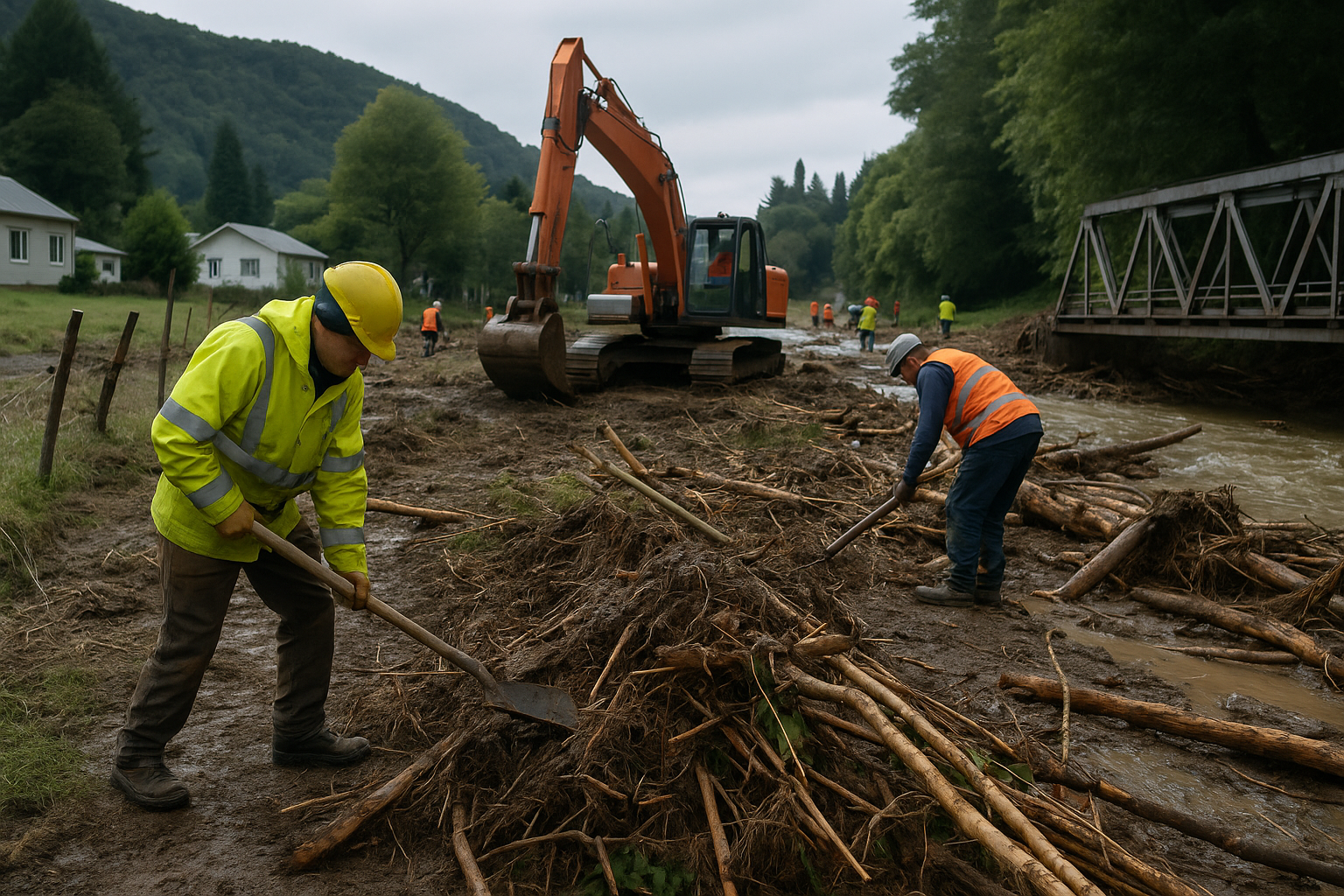Deadly Texas Flash Floods Highlight Urgent Need for Global Warning Reforms
Flash floods are responsible for 85% of flood-related fatalities worldwide, killing over 5,000 people each year, according to the WMO.

A catastrophic flash flood in the heart of Texas Hill Country has claimed the lives of over 100 people, with dozens more still missing, many of them children attending summer camps. The disaster, triggered by a massive, overnight deluge that overwhelmed the Guadalupe River, has become one of the deadliest flash flood events in U.S. history, reigniting calls for stronger early warning systems and flood preparedness globally.
The World Meteorological Organization (WMO) extended its deepest condolences to those affected and used the tragedy to highlight the pressing need for accelerated action on the Early Warnings for All initiative, an international program to ensure that everyone on Earth is protected by an early warning system by 2027.
A Disaster Unfolds Overnight
Between July 3 and 4, a rare combination of tropical moisture from a storm system in Mexico, coupled with an upper-level disturbance from the northwest, created a mesoscale convective complex—a large, slow-moving thunderstorm system that dumped between 10 and 18 inches (25–46 cm) of rain across Kerr County and surrounding regions in just a few hours.
At around 4 a.m., with residents still asleep, the Guadalupe River surged an astonishing 26 feet (8 meters) in just 45 minutes, sweeping through homes, campsites, and roads. Emergency workers later described scenes of collapsed bridges, uprooted trees, and debris fields stretching for kilometers.
Despite the National Weather Service (NWS) issuing a flash flood watch 12 hours earlier and escalating it to a flash flood emergency three hours before the worst impacts, many people received no effective local warnings. Camps lacked sirens, and digital alerts issued during the night went unnoticed by sleeping residents.
Flash Floods: The World’s Deadliest Flooding Hazard
Flash floods are responsible for 85% of flood-related fatalities worldwide, killing over 5,000 people each year, according to the WMO. Unlike slow-rising river floods, flash floods occur within a very short window—often just a few hours after heavy rainfall—leaving little time for evacuation or emergency response.
What makes flash floods particularly dangerous is their intensity and speed, especially in areas like the Texas Hill Country, where steep, rocky terrain accelerates runoff and limits soil absorption. Urbanization and poor land-use planning compound the risks by reducing natural drainage and increasing impermeable surfaces.
Climate Change and Urbanization Amplify the Threat
While flash floods are not new, experts warn they are becoming more frequent and more severe. The warming atmosphere can hold more moisture, leading to extreme rainfall events like those witnessed in Texas.
Urbanization further intensifies risks by altering natural waterways and reducing the land’s ability to absorb rain. Poorly planned development in flood-prone areas, especially around rivers and low-lying valleys, puts communities directly in harm’s way.
Globally, the human and economic costs are staggering:
-
2020 South Asian Floods: 6,511 deaths and $105 billion in damage
-
2022 Pakistan Floods: 1,700+ deaths, 33 million displaced, $40 billion in losses
-
2024 Floods across Europe, Middle East, and Africa: $36 billion in damages
Socioeconomic Vulnerabilities and Global Inequities
According to a World Bank study, 1.81 billion people—23% of the global population—are directly exposed to 1-in-100-year floods, with 89% living in low- and middle-income countries. These regions often lack robust early warning systems, reliable communications, and infrastructure to cope with flash floods.
The Texas floods, though occurring in a high-income nation, revealed vulnerabilities that are mirrored globally: late-night warnings, gaps in local communication infrastructure, and lack of community-level emergency preparedness.
WMO’s Flash Flood Guidance System: A Global Solution
To address this global challenge, the World Meteorological Organization has implemented the Flash Flood Guidance System (FFGS), a real-time forecasting and alert system operating in over 70 countries. It integrates:
-
Satellite-based rainfall estimates
-
Radar and high-resolution weather models
-
Real-time river and soil data
The system allows trained national forecasters to anticipate flash flood threats hours in advance, with support from regional centers that coordinate alerts and responses. The FFGS has now been integrated into the Multi-Hazard Early Warning System framework under the WMO's Early Warnings for All initiative.
Beyond tools, WMO plays a pivotal role in:
-
Training hydrometeorological professionals
-
Establishing national protocols for risk communication
-
Certifying experts in flash flood forecasting
-
Fostering international collaboration between weather agencies and disaster response units
What Comes Next?
The Texas floods serve as a sobering wake-up call. While forecasting tools exist, the real challenge lies in ensuring timely, localized dissemination of warnings, community education, and infrastructure readiness. Sirens in camps, night-alert systems, localized hazard mapping, and improved shelter planning could all save lives.
The WMO reiterates that preventing future tragedies depends not only on technology but also on coordination, policy enforcement, and grassroots preparedness. As climate change reshapes the planet’s weather systems, flash floods are no longer rare disasters—they are recurring threats demanding urgent, global cooperation.










